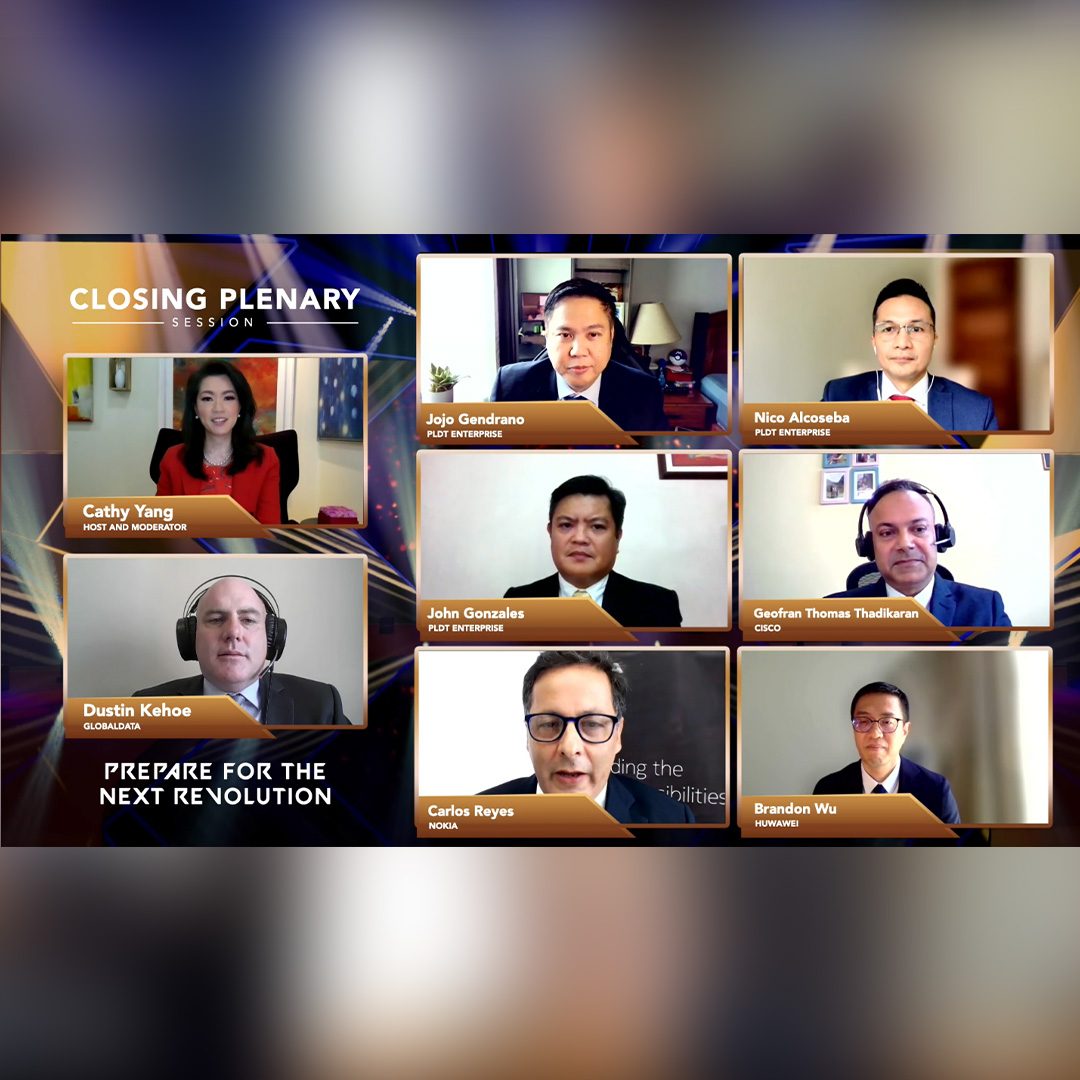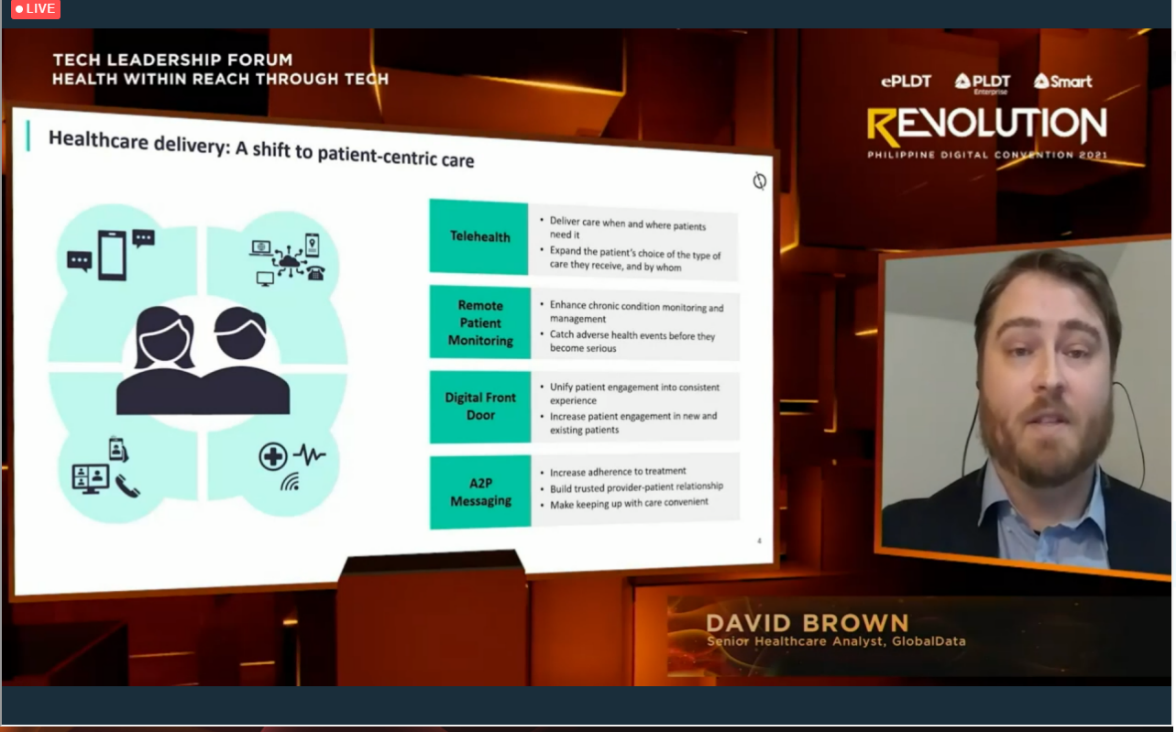Revolutionary tech for smart cities, sustainability and health, and the future of digitalization

Every year, PLDT Enterprise gathers together a group of executives and industry heads to talk about the latest in digital technology and how they are being applied in business to improve lives and productivity for the Philippine Digital Convention (PH Digicon). This year, the three-day event took place on the virtual stage from October 6 to 8, centered around the theme of REVOLUTION, in reference to the disruptive technologies that enabled businesses to bounce back from the effects of the global pandemic.
READ: Digicon day 1 highlights, (Rethinking manufacturing, retail, BPOs, and advocacy work with revolutionary technologies
READ: Digicon day 2 highlights (Enter the hyperscalers, and how tech enabled industries to cope with the pandemic)
Let’s take a look at some of the highlights from day three of the convention – from why smart cities are important for sustainability, to ensuring better inclusivity and effectivity for healthcare, to what all of this means to the business landscape in the region as a whole.
Building for a better normal
Decades of understanding city development and human behavior are now enabling us to rethink the way we design cities from the ground up. For existing cities, however, digital transformation is done by retrofitting streets to contain smarter features.
Alfie Amir, a principal analyst from GlobalData, shared during a Tech Leadership Forum on smart cities and sustainability that the challenge in building smarter cities isn’t so much about acquiring the tech itself like cameras and sensors but making all the different pieces talk to each other in a way that makes sense.

Take traffic lights as an example. If you want traffic lights to be in sync or working with data from sensors to make mobility better, then translation between the components needs to happen multiplied by the number of traffic lights and sensors you need in one city.
This is a small demonstration of how tech should work not as separate components but as contributors that feed data into a singular platform where all the information can be accessed. This is what Steve Hwang, Nokia’s head of government & cities program in the Asia-Pacific and Japan region, calls “digital ingesting and data lake functionality.”
A smarter city makes living easier in different ways. Smart cities can create better urban mobility. Urban sustainability is also made possible by studying consumption and making sure resources are distributed and used efficiently, and also by having the capability to analyze contributors to pollution and find ways to solve them. The same goes for citizen engagement and even policy-making.
In other countries, we also see artificial intelligence being used for urban security as well as operating automated vehicles and establishing charging centers for electric vehicles.
A platform approach, which can mean improved security as well, can also include other factors including social media of government agencies, vaccination programs, other government services, mobilizing health centers, and so much more.
PLDT Enterprise industry solutions consultant for local government Alvin Martinez cites the challenges that the Philippines faces as a third-world country when it comes to building Smart Cities. “There’s the lack of infrastructure, inclusive connectivity and computing power, and expertise to deliver these smart city services.”
“The PLDT Group understands that IT & telecommunications play a critical role in stimulating the critical growth of the modern economy & in developing a strong digital ecosystem. Through our Smart City Solutions, the group has also enabled both public and private institutions to help in the development of education, healthcare, and public safety.”
Tech for healthcare inclusivity
In the past, digitalizing healthcare services was riddled with concerns, and rightly so. How do you establish the case of a patient whom you aren’t able to examine physically? How do you determine the types of medication a person needs without confirming their case firsthand?
Up to this day, those questions are still being asked within the medical community, but there have been measures to loosen some grips on the matter. Depending on the situation, for example, a medical practitioner is now able to give advice (especially urgent care or consultations) through examinations via video call while physical examinations are still recommended for any emergency needs or more serious conditions.

Digital technology has served as a new infrastructure here, offering secure channels for patients and their doctors, as well as ease of accessing medical records and past prescriptions through the cloud. Using IoT, healthcare providers are also able to monitor patients even remotely.
Remote healthcare is bridging the gap between doctors and patients on different fronts. Elderly patients, and citizens in far-flung areas, can now consult and get in touch with doctors easily and at a more affordable cost.
In the Philippines, drones are being tested for the delivery of supplies to rural areas. Pfizer China and APAC’s digital innovation lab lead William Xu shared that they are working with different robotics companies to test high-tech drones in carrying the essential medical supplies to rural populations.
He adds that this is part of their open innovation programs where they offer their tests and findings to other healthcare providers in hopes of promoting creation, adoption, and collaboration in and outside Pfizer.
GlobalData’s senior healthcare analyst David Brown said that with digital technology, a person can now “age in place” better. He also added that those who fail to digitalize will only marginalize their patients further, pointing out that there are still a lot of improvements that can be done in helping the industry embrace digital technologies.
Individualizing experiences and the “Phygital” revolution
Digital transformation is creating a hyperconnected world and will continue to impact people’s lives for decades to come. And Dustin Kehoe, head of Asia-Pacific research practice for Global Data, pointed out that this is a revolution that is at our doorstep during the plenary session.
He shared that while agile workforces and infrastructure for information and communications technologies are being further developed, a lot of focus has also been poured into understanding consumers as individuals rather than market segments.
This sentiment was also echoed by the rest of the panel who shared that richer data analysis is enabling businesses to customize experiences based on people’s personal preferences. Customers are also now able to expect experiences that are immediate, possibly reducing opportunity losses due to delays.
Customer experiences could also be expanded to physical experiences as lockdown measures are eased. Nico Alcoseba, vice president and head of ICT business for PLDT Enterprise, shared that this is what we call “Phygital”, which is a merging of both digital and physical experiences, where customers are able to examine products on digital platforms and finish transactions in physical spaces where they can check their purchases before finalizing them.
Humanity and technology
Individual experience as a whole was very important for the panel as they spoke about the importance of putting humanity at the center of digital transformation. After all, it is the people who will both make digital transformation possible and consume the end products being developed.
“The big takeaway from the last [few] days is that it’s not about technology, it’s about people. In the end, tech is here to empower them and not enslave them,” Alcoseba shared to the rest of the panel.
The panel shared that digital hesitancy is understandable, but at this point in time, transforming quickly and eliminating legacy structures are imperative as the habits consumers and workforces have formed since the pandemic began will stay in the foreseeable future. They do however remind everyone that mistakes will be a part of the process.
Geofran Thomas Thadikaran, regional director for cloud and service provider partnerships of Cisco, said that accommodating failure is part of digital transformation, not just agility. He added that it is empathy that businesses need to have above all as people will have difficulty in understanding how new technologies work before they can apply them effectively and innovatively.
“In the forefront, digital is not a choice anymore but now digital and the role of technology is important to continue on the revolution to be resilient,” said Jojo Gendrano, FVP & head of PLDT Enterprise core business solutions.
As digital transformation becomes a part of the core of every business, it is only when we are able to embrace what it really means that we will begin to see what other bigger ideas will stem from this. Revolutionary technology is disruptive, and it also enables the most creative (and sometimes outrageous) ideas to come true. – Rappler.com



/cloudfront-us-east-1.images.arcpublishing.com/gray/KOE2KJ2UTNBUFO5ZFB2BJHRTCM.JPG)




